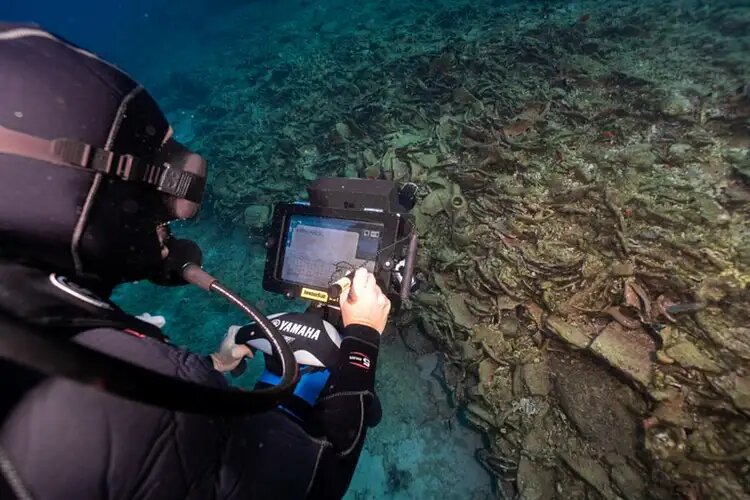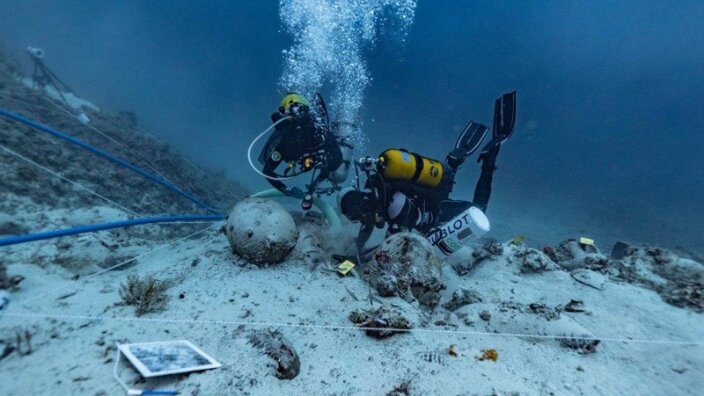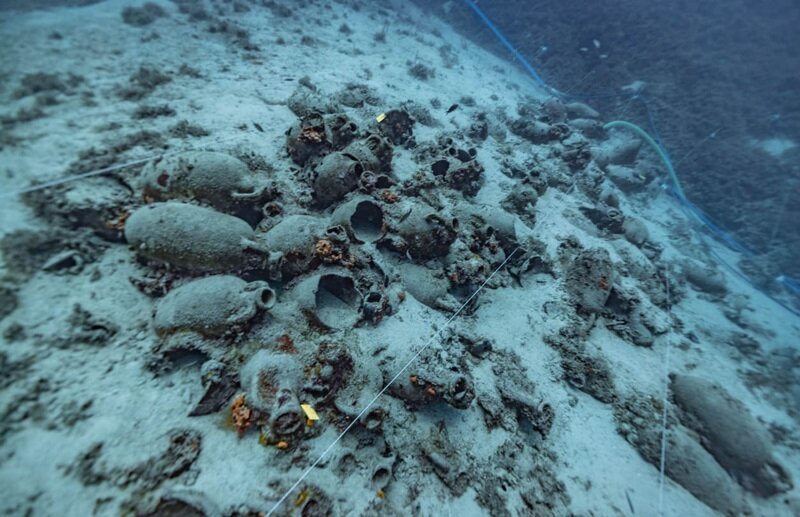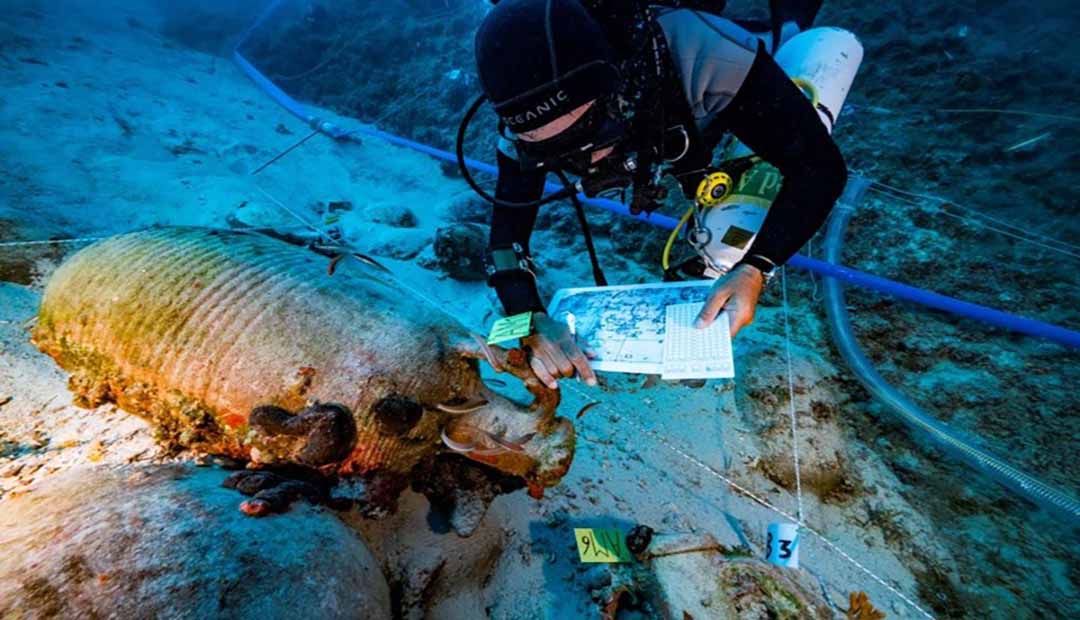Excavation of Byzantine Shipwreck in Aegean Reveals 5th-Century Ceramics
Excavations of a Byzantine shipwreck off the coast of the Greek island Samos have revealed that the ship and its contents likely date to some time between 480 and 520 AD, the Greek Culture Ministry announced.
The shipwreck is located in the sea near the small Fournoi island group, which is southwest of Samos. The 15 amphorae found in the sand near the wreck, along with the wooden skeleton of the ship itself, were in remarkably good condition.

There are nearly 60 shipwrecks from various historical periods located in the region.
Even though the shipwreck was found in one of the steepest and most inaccessible areas of the islands, it was chosen for further study during the 2021 excavation season because it was extremely well-preserved.
Experts believe that the ship’s wooden framing survived throughout the centuries because it was crushed under the rest of the ship and oxygen couldn’t reach it, stalling the process of decay.
Archaeologists found 15 amphorae at the site of a Byzantine shipwreck in Greece. Archaeologists worked throughout last year to clear sand and debris from the wreck to provide access for experts to conduct studies of the site.
This allowed archaeologists to discover the 15 amphorae, many of which have been linked to various areas across the surrounding region.
The distinct style of one amphora is linked to the city of Sinope on the Black Sea, and six other amphorae are thought to be from Crimea and Heaclea Pontica on the Black Sea. Some ceramics found at the site are also connected to Phocaea in Asia Minor.

These finds reflect the expansionist trade policy of the Byzantine Emperor Anastasius I, who was the ruler during the time the shipwreck occurred.
Greek archaeologist Giorgos Koutsouflakis is heading the underwater excavations at the site, and his team includes 25 divers, among whom are students, archaeologists, photographers, and others.
In total, they have completed nearly 300 dives at the site and spent over 200 hours underwater excavating the shipwreck. Work at the site will continue into future seasons.
There are many ancient shipwrecks across the Greek seas, and archaeologists have found countless historic treasures in these sunken archaeological sites.
Off the Greek island of Alonissos, one such shipwreck has been transformed into an underwater archaeology museum, where divers can explore the shipwreck underwater.

At the 5th century BC wreck of Peristera, divers accompanied by guides can get a close look at the huge pile of amphorae, which extends to the sea bottom for a length of 25 meters (82 feet).
The shipwreck, which is one of the most important in all of classical antiquity, was loaded with thousands of wine amphorae from Mendi, an ancient city of Halkidiki, and Peparithos, today’s Skopelos, areas known in antiquity for their wine.




